
The InDepth Guide To Growing Clematis In Pots Container gardening flowers, Clematis, Flower
Patio rose and clematis. An English rose entwined with clematis in a faded terracotta pot makes a lovely statement. The rich velvety clematis is equal to the regal tones of Rosa 'Suffolk'. Small pots of ivy cushion the rose, while nemesia adds another tint of purple. Discover how to plant up this patio rose and clematis container.

clematis in a pot Container gardening, Plants, Garden inspiration
Clematis can be overwintered in pots and containers, even in the coldest climates - providing they belong to the correct group for your zone, and your container is freeze-safe. Most wood, plastic, resin, metal, or fiberglass pots should tolerate an extended freeze.
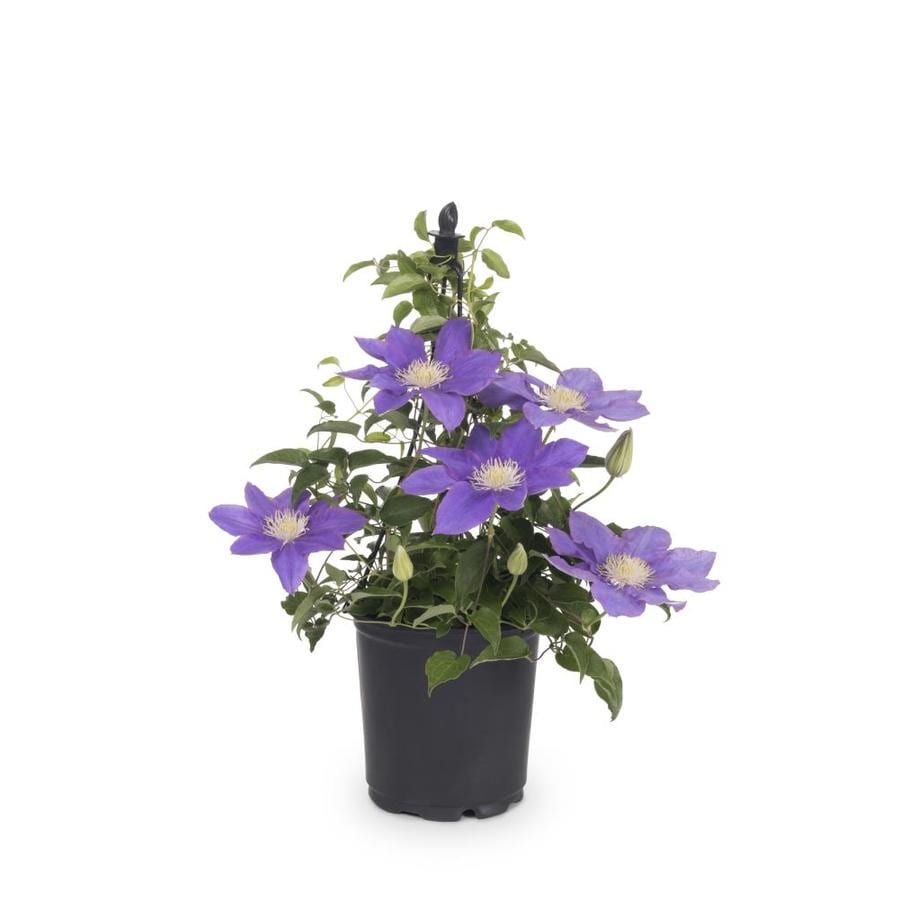
Monrovia 1Gallon in Pot Clematis at
The smaller varieties of Clematis typically grow about 4″ feet high with a spread of 2-to-4′ feet. Their growth can be controlled and guided with regular pruning. What Type Of Pot Is Best For Growing Clematis? Even with the smaller varieties of Clematis, you will need a large pot to accommodate the plant's roots.

Lily Of The Valley best contained in a pot, but so pretty and fragrantlooking for balcony
Before placing the compost in the container do place crocks or pebbles over the drainage holes in the bottom of the container; this gives additional help with drainage. Before planting your new clematis, soak it in its pot for 20 minutes in a bucket of water. This will ensure that the rootball is totally wet.

How To Grow Clematis In Containers Flowersandflowerthings Clematis plants, Clematis
Don't use a plastic pot if you're going to grow clematis out on a deck garden or a patio, says Evison. These pots aren't well insulated and will get hot quite quickly, increasing evaporation and dehydration in your plant. Use one with holes in the bottom because even though your clematis likes water, it needs to have adequate drainage to.
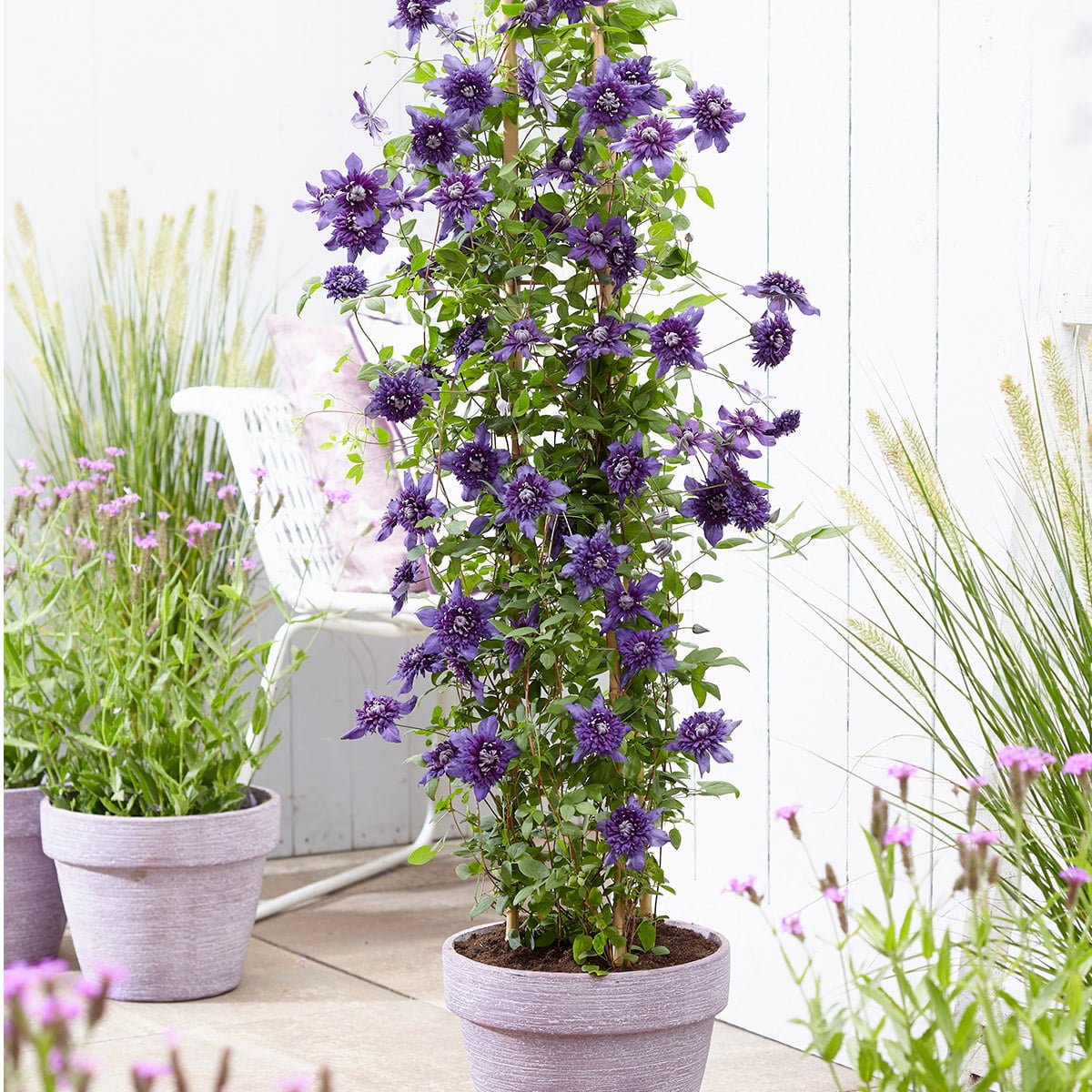
Repeat Flowering Double Clematis Plants Richard Jackson Garden
To grow Clematis indoors in pots, choose a well-draining pot and a sunny location near a window. Use a high-quality potting mix and provide a trellis for support. Keep the soil evenly moist but not waterlogged. Fertilize every 4-6 weeks during the growing season and prune as needed to maintain shape.

Growing Zone For Clematis / Clematis the queen of vines All you need to know about growing
Pack the compost down firmly. Clematis roots can grow in tightly packed soil, and the firmer you pack it in, the less it will sink upon being watered. Ideally, the top of your soil will only be 2 inches (5.1 cm) below the rim of the container. 5. Drench the root ball in water.
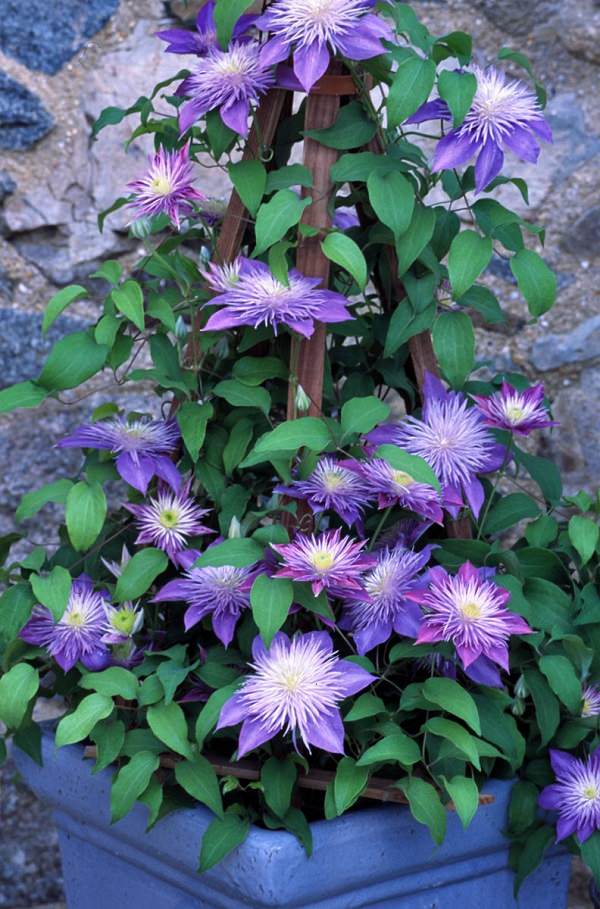
Best Blue Flowers To Grow In Containers Balcony Garden Web
How to Grow Clematis in a Pot. The best way to propagate clematis in pots is by cuttings. Take a 4-6 inches long cutting from a healthy plant in April or May. Take out all the lower leaves, and plant it in a pot filled with a good quality potting mix. Cover the pot with a clear plastic bag, and keep it in a warm spot, away from direct sunlight.

How to Grow Clematis in Containers Gardener’s Path
Step 2: Prepare the soil and location to sow Clematis seeds. Fill a gardening pot with sterile planting mix to within 1/2 inch of the top. Because the Clematis seedling develops a long taproot, the pot should be deep. Allow the planter mix to drain after moistening it.
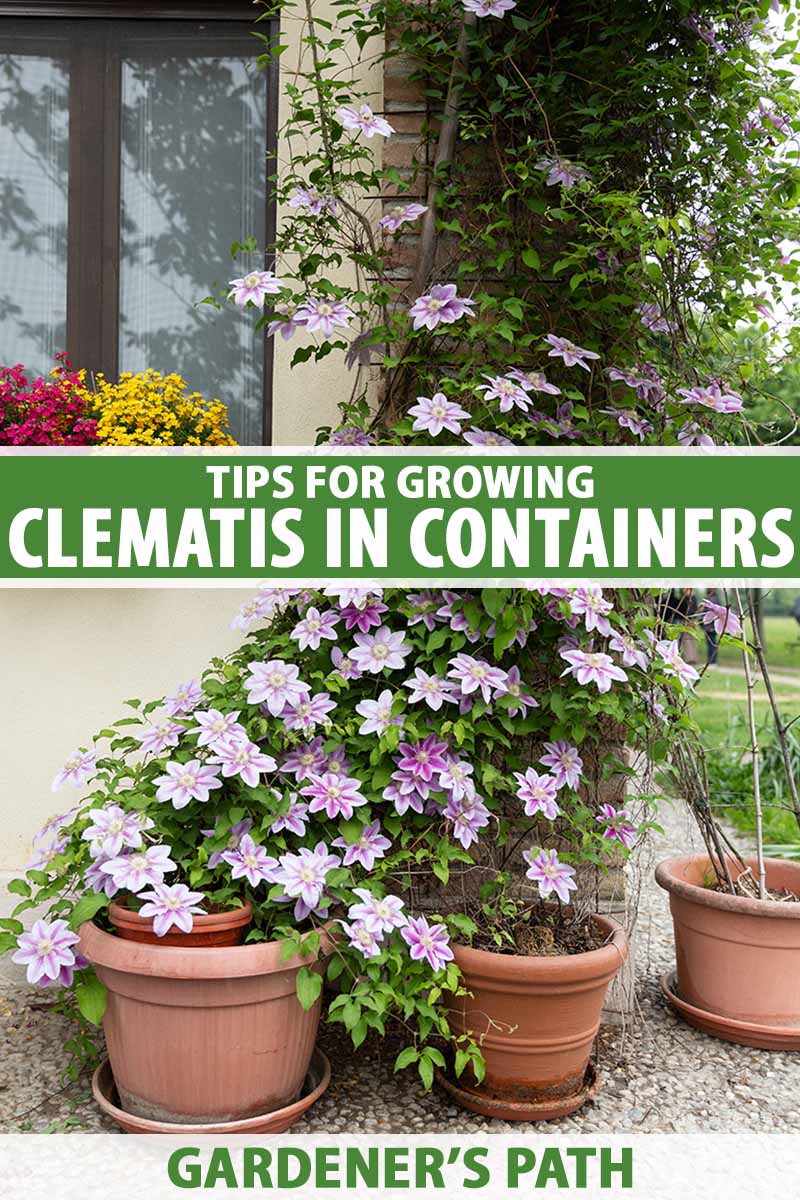
How to Grow Clematis in Containers Gardener’s Path
Caring for Potted Clematis Plants. Clematis planted in a container requires regular irrigation because potting soil dries quickly. Check the plant every day, especially during hot, dry weather. Soak the potting mix whenever the top 1 or 2 inches (2.5-5 cm.) feels dry. Fertilizer provides the nutrients Clematis needs to bloom throughout the season.

Clematis "Mrs N Thompson" growing in a large terracotta pot Stock Photo 8199451 Alamy
Fill the container to within 3 inches of the rim with a suitable potting soil. Ease the rootball of your clematis plant out of the pot and nestle into the compost with the root crown buried below the surface of the soil. 'Finally, stand the pot on "feet" to ensure that surplus moisture freely drains away, and water copiously to ensure that.

double clematis Clematis, Container Gardening, Growing, Canning, Plants, Reference, Hope
3. Soak And Plant Your Clematis Starter. Using warm water, soak the roots of your clematis starter for an hour or two before planting. This will rehydrate the roots and give them a better start in the soil. While the roots soak, fill your planter with well-draining soil.

Taiga Clematis Shop New Vines with
Clematis for containers. Early-flowering clematis of moderate vigour make the best choices for container growing. Whether positioned against a wall trellis or grown up an obelisk, these compact climbers are perfect where space is limited. Advertise here. Get involved. The Royal Horticultural Society is the UK's leading gardening charity..

My beautiful purple clematis. Purple clematis, Container gardening, Plants
A new container should be prepared as previously described, using fresh potting mix. Make a hole as wide and deep as the root system and replace it, backfilling around it with additional soil. Press the soil with your hands to firm the top, and water your clematis in well to settle the medium.
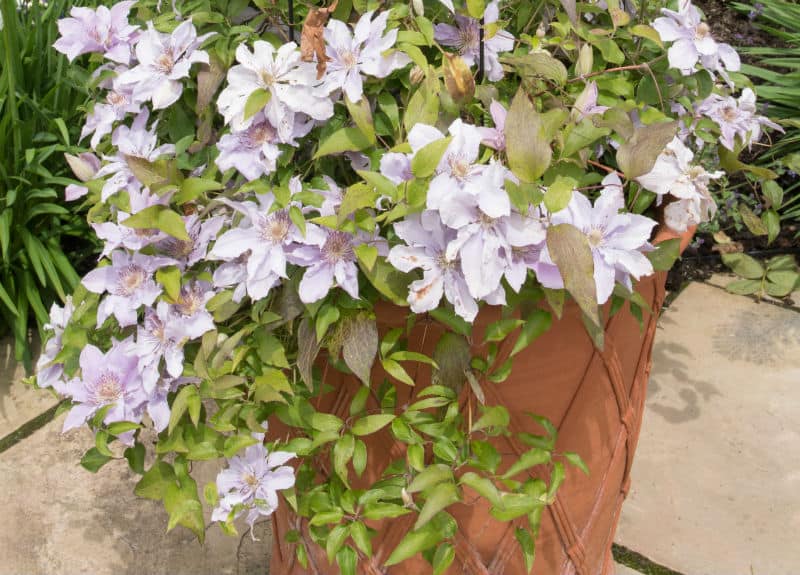
Growing Clematis in Pots Pyracantha.co.uk
You should do so carefully not to damage the plant's roots or the stems and leaves. Put some soil and compost on top of the pebbles. Put enough soil and compost to provide a nice base. Spread it around so that all the pebbles are covered. Position the clematis inside the container and fill the sides with soil.

How to Grow Clematis in Containers Gardener’s Path
Choosing The Right Clematis for Containers. Clematis require a cool, moist root run, and growing one in a free-standing container inevitably opens the root system to the vagaries of the weather. In the summer the pot and its contents may become very hot and dry. In the winter, if it is not given some protection, the root system can be frozen solid.